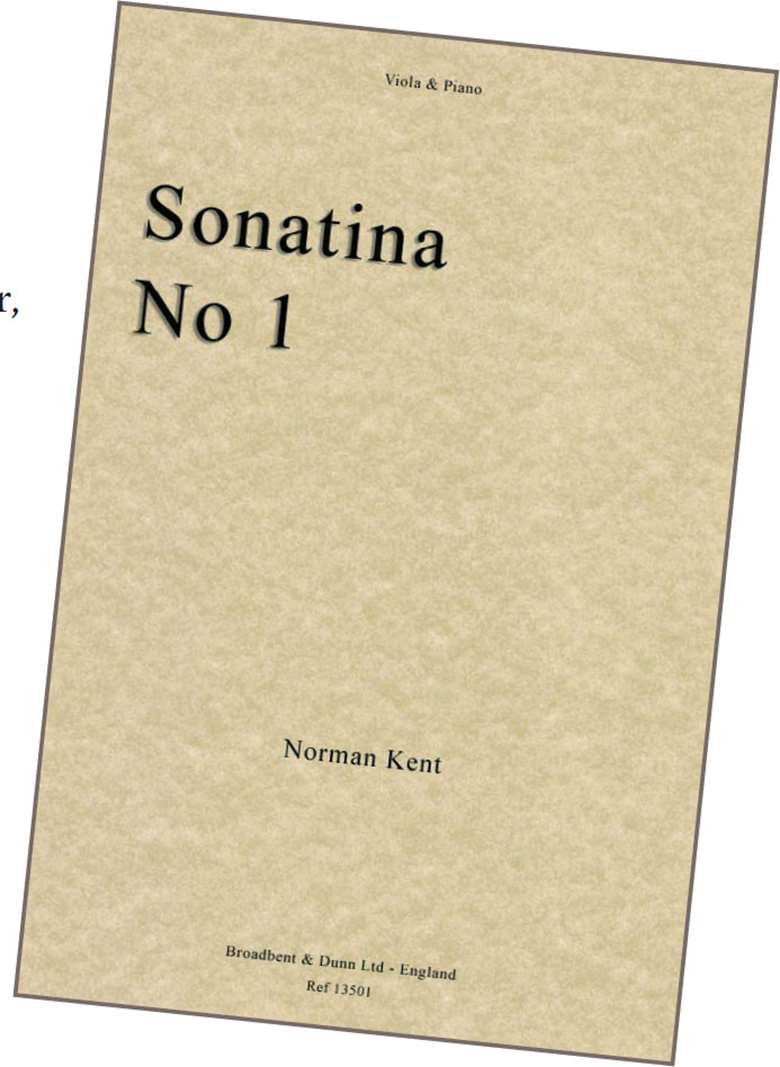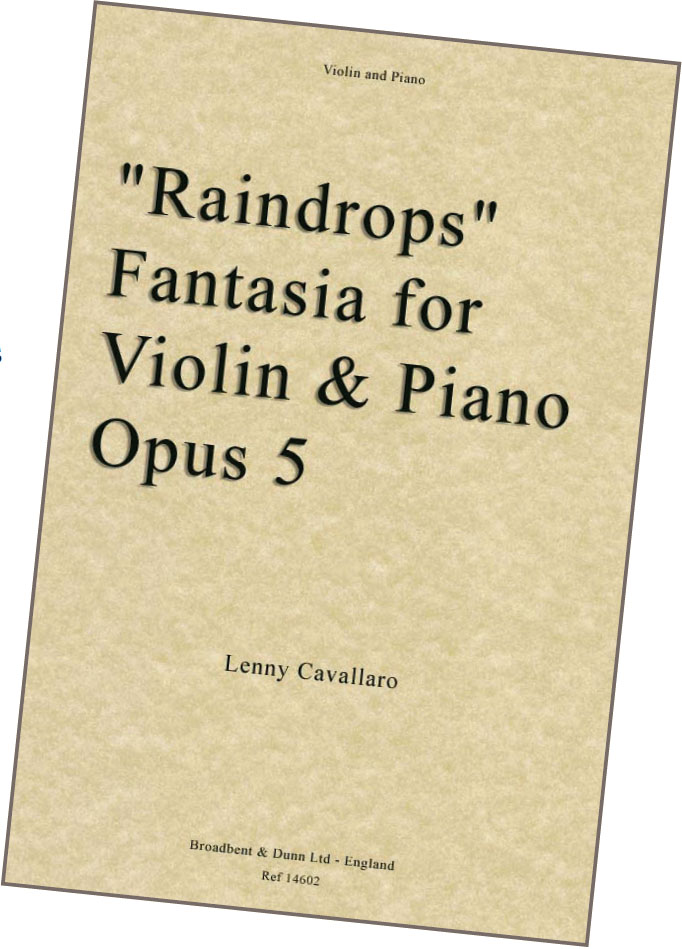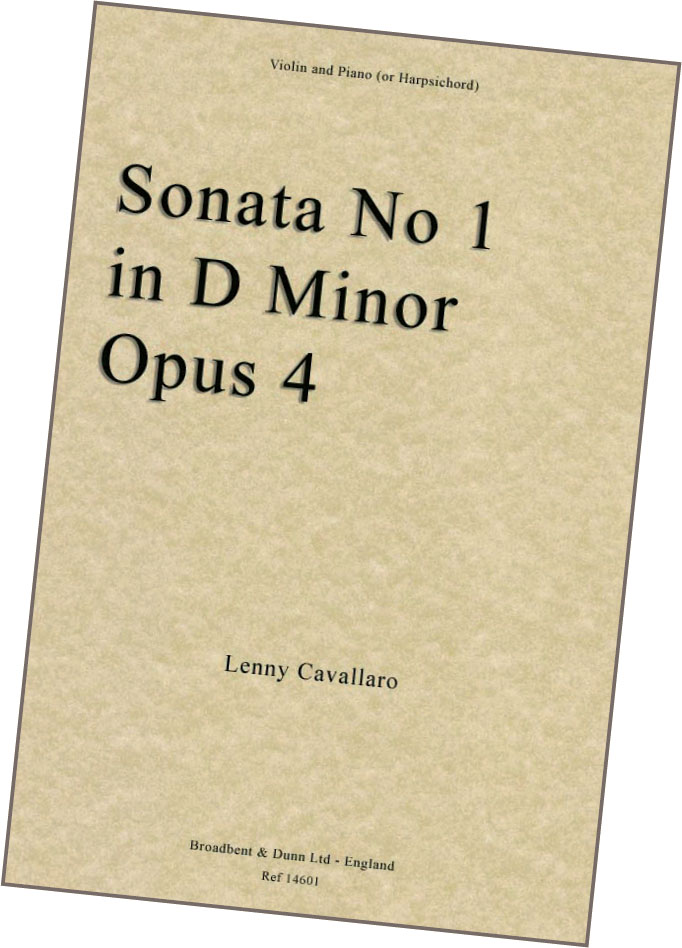Violin Sheet Music Reviews: April 2019
Helena Ruinard
Monday, April 1, 2019
Helena Ruinard takes us through a selection of viola and violin publications from Broadbent & Dunn

Sonatinas No. 1 and No. 2
As a pupil of Herbert Howells and a highly ranked viola player with the BBC Symphony Orchestra for much of his career, Norman Kent is well placed to make some pleasing additions to the viola repertoire. Firmly in the English tradition, these Sonatinas exploit the full range of the viola up to C in sixth position and are made up of valiant march themes, cantabile passages and lighter, more urgent music in the same vein as Elgar's orchestral works.
Both are pleasingly idiomatic for the viola and could be useful for students from around Grade 6 level upwards. There are multi-octave arpeggios which sound impressive and sit nicely on the instrument and singing melodies livened up with dotted rhythms or semiquaver decorations.
Each Sonatina is made up of three short movements: steady – slow – fast. The first movement of Sonatina No. 1 begins with an introduction made up of bold statements with lots of triplet arpeggios. This gives way to the main section, marked ‘Sostenuto’, made up of a pastoral theme reminiscent of the music for Last of the Summer Wine together with a livelier variation on it, and the movement ends with a rhapsodic coda. The second movement is a gentle ‘Andante Cantabile’ in 6/8, based simply on a descending scale with lyrical ornaments followed by a sequence of ascending scales, and this sets up the last movement – a combination of Elgarian scherzo, march theme and a slower, tender section in the tonic major.
Sonatina No. 2 seems a little more sophisticated in how the melodies are developed and concluded. The first movement has a slightly broader conception, beginning with a 24-bar Elgarian march marked ‘Andante’ which turns into a more singing section in the flat submediant. As if to break out of the subdued nature of this tonality, the composer moves into the tonic minor with some decisive arpeggios and this material is used to take us to the end of the movement. The second movement is short and simple in a similar way to its counterpart in the first Sonatina. Its main theme begins in a richer way, with consolatory falling sixths and sevenths, but the answering phrase is rather pedestrian and perhaps inspiration was lacking after that. With their clearly defined chordal sequences and tightly composed lines, it is the melodies in the third movement, ‘Fugue and Variations’, that are the most convincing. There is a range of styles here from the staccato discipline of the fugue, through a lilting, Renaissance-style variation to the continuous quaver arpeggios of the final variation.
Both sonatinas are worth looking at and while the last movement of Sonatina No. 1 is an enjoyable romp and a great introduction to Elgarian orchestral music, Sonatina No. 2 has a little more substance to it as a whole.

‘Raindrops’ Fantasia for Violin and Piano, Op. 5
Lenny Cavallaro is the perfect candidate for representation by Broadbent & Dunn, who many may know for its high-quality arrangements of jazz standards and other music for string quartet by Carlo Martelli and Bill Thorp. In fact, its catalogue is full of chamber music mainly by living composers who write in tonal styles, or, to quote its website, who write ‘music which is not only enjoyable for the musician to play but is also pleasant to the ear of the listener’.
US-based Cavallaro is something of a Renaissance man as he is not only a prize-winning pianist who has performed at the Lincoln Centre but also a talented composer, music critic, writer and now English teacher. As if that wasn't enough, one of the musicians he works with, violinist Robert Portney – who is evidently a trusted artistic partner, is now an eminent psychiatrist, having had a career as a soloist with major US orchestras.
If you listen to the pair's performance of Raindrops on YouTube with the sheet music in front of you it becomes clear just how much Portney adds – and sometimes recomposes – to make the piece work gracefully on the violin. It would be perfect if the publishers and the composer could get together with Portney to edit in some of his imaginative articulation and interpretation but for now, we will have to use our spare time and judgement to do that, and be grateful for clear and thoughtfully set out parts.

Sonata No.1 In D Minor, Op. 4
While the ‘Raindrops’. Fantasia is Baroque in style, with virtuoso salon music inflections, the first three movements of this sonata are purer homage to Corelli and the like, with the fourth movement titled, ‘Variations in the Italian manner on a theme by Mozart’.
Cavallaro intends performers to add their own bowings, ornamentation and dynamics and perhaps by doing so add some contemporary authenticity. Again, it is worth listening to the recording of him, and violinist Sarah Darling this time, on YouTube.
It may be true that violin students are spoilt for choice once they reach a certain level but both these works could well engage someone of Grade 7-8 standard – perhaps an adult student who is looking for something different.

